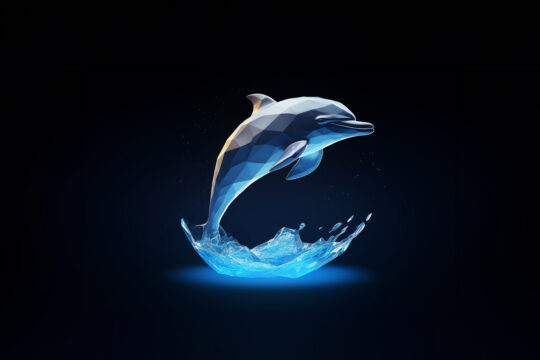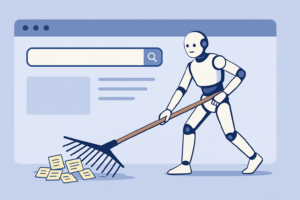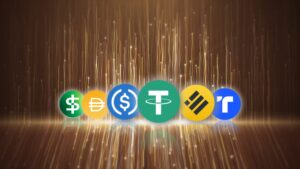Rodrigo Martinez is a Chilean entrepreneur that consecutively conceived, created and successfully sold two of Brazil’s largest Internet companies: STI (4th largest ISP) and hpG (3rd largest Portal) WITHOUT A SINGLE DOLLAR from investors. Donning many hats, he currently is Advisory Board Member at Kairos Society ASEAN, Mentor at Startup Leadership Program Singapore and Founder and Director at Dikaios Internet Pte. Ltd. To his credit, the hpG deal was the largest internet deal of its year and is still regarded till today as an uncommon successful business case. In just 18 months, the startup was conceived from scratch and was sold at the best possible valuation.
Rodrigo was originally born in Santiago, Chile and his early childhood was in a country called Suriname where he alphabetized in Dutch. Eventually he moved to Brazil and lived there for more than 24 years and also where he built his two companies.
Starting our discussion, “I never went to university as I started my first company when I was still in high school. I learn by continuous observation, leveraging on what others have learned and by my own trial and error”, says Rodrigo.
Connect with Rodrigo on Facebook here, and find out the latest happenings on twitter here. Read on to find out how hpG became the largest internet deal of the year and tips Rodrigo shares with us as an Investor.
Let’s start by asking about your first entrepreneurial venture STI – which started as a BBS (Bulletin Board System), expanded to ISP and finally got acquired by PSINet. What insights did this first venture leave you with?
Having started a business out of my hobby of BBSes that grew until it became Brazil’s 4th largest ISP (Internet Service Provider) and was eventually acquired by PSINet gave me many precious insights. It showed me that building a company and selling it was a way of reaching success (wealth) that I wasn’t aware of before. I also learned that if I changed my mindset, the process of building and selling a company need not necessarily be a long and arduous process. But most importantly, success changed my life, and I became passionate for success.
The second venture hpG – one of the fastest deals in Internet history is a business case study. Was it planned to build and sell, and how did you achieve the entire cycle in such a short record time?
Yes, that’s correct. It was a process meticulously engineered even from the pre-conception stage. I had just sold my first company, had tasted success and liked the taste. Therefore I decided to flip the switch from the “Follow your Passion” mode, which can also take you to success but typically at a much higher cost of time and money (it took me 7 years to build and sell STI) and also with a much greater risk of failure, to what I have called “Passion for Success”. I made a decision that I was going to build an even bigger company but with much less investment in time and money. This led me to asking myself the following questions:
What can I build that someone would want to acquire?
Where is the market going? What is the next BIG THING?
Where is there a “fight” going on amongst “big players” so that if I build a “weapon” anyone of these “fighters” will want to buy my “weapon” to use it against the other “players”?
Passion for Success had put me and my co-founders at an elevated level of mindfulness which in return gave us the right answers to these questions. Hence hpG was born with the ultimate goal of capturing the highest possible position in the internet audience ranking and therefore become THE acquisition target amongst the “big players”.
Things that went wrong first time, but you corrected for the second turn?
We were building a business on the wave of the growing trend of people having their first online experience. I would say that we made many more right decisions than the rest of the competition and also were absolutely customer centric and thus outgrew most of our competition. Selling our first company was something that we hadn’t expected. For hpG we had our “data room” ready for buyer’s due diligence from day 0 and this also expedited the M&A process whatsapplover.
Currently, looking at the Whatsapp acquisition, I’m afraid lot of platforms will come up which are unclear on monetization strategy or with no current monetization strategy at all. From your experience, what do you suggest such entrepreneurs do – get users first and then figure out the monetization OR have a clear monetization strategy from the beginning?
Entrepreneurs must understand that in reality they have two different customers: the end users of their service but also their pool of possible acquirers. They must then build the business and create VALUE for BOTH simultaneously. Monetization can also become “friction” in this process. With hpG we decided to remove this “friction” and thus the “weapon” was built upon the free web hosting model (GeoCities). But we only went that route because we could afford to do so since we had just capitalized ourselves by successfully selling STI. In essence, put monetization second if you can afford to do so.
In your Investing Career, what are the top 3 mistakes you see entrepreneurs make again and again? What do you think can do done to correct them?
I would say that the biggest mistake of all is not being honest with themselves as to why they are in to Entrepreneurship. To explain, I like comparing Entrepreneurship to a sport activity, for example soccer. Some may like soccer because they want to be spectators/cheer, some may like to practice it because of the health benefits, etc. But if you look at guys like Messi, Cristiano Ronaldo, Pele and others you will observe that for these high performance athletes, soccer was the vehicle that took them from a less than privileged circumstance to where they are today. All reasons for wanting to be in to soccer are legitimate. What is detrimental to the Entrepreneur’s performance is to send “mixed signals” to his brain. Perhaps deep down inside he also wants to achieve success, but on the surface he is posing differently.
Another big mistake is bringing on board co-founders that have no or limited ambition. These will end up acting as a “hand-brake” that is always pulled up, sometimes more sometimes less, and will make the “vehicle” move at less than optimal speed.
Too much early stage funding is another trap, specially for the first time entrepreneur. This goes back to the whole erroneous concept of focusing on funding when there are much more important things like proper co-founders, customers, etc. There is a time and place for funding, but making funding your goal will get you just that: funding. Eventually the money runs out and then come the consequences. Excessive capital will also lead to weakening of the founders intellectual capital. They will strive less to be creative in their solutions to the problems they encounter. I have proposed MVF: Minimal Viable Funding as the solution to this. Receive just enough funding to take you to the next level.
Coming back to hpG, would like to understand what fueled it’s growth compared to it’s competitors? Golden rules for customer acquisition?
At the core of hpG’s success was what I call “Enriching User Experience”. We were obsessive with this to the extent that, from what I know, we were the first ones in the world to provide our users with a URL like www.username.hpg.com.br versus www.geocities.com/neighbourhood/street/˜username/ . Ours was much more appealing and something that users would be “proud” to put on their business cards for example.
We also hit the bull’s eye in finding our early adopters and evangelists. The opinion makers, those that would ignite and fuel the word of mouth marketing that was so instrumental in our accelerated growth: 13 months after going live we went from zero to No. 1 in the world!
Based on your extensive entrepreneurial and Investment experience, tell us the biggest deciding factor in a startup’s success.
The biggest deciding factor will always be the founding team, their ambition and their mindset. The WHY they are in to Entrepreneurship to begin with and the HOW BADLY they want to be successful. I created a Formula for Fast Track Entrepreneurial Success:
Success = Burning Desire + (Vision + Goal Setting) + Focus + ([Courage + Persistance] + Mental Sharpness), which can also be written as: Success = Burning Desire + Thinking BIG + Focus + GWIT.
#GWIT is a term I coined earlier this year. It’s the combination of GRIT + WIT. Those operating under this formula will have higher odds of success and can also achieve success faster.
We hope you enjoyed reading this interview as much as we did doing it.













